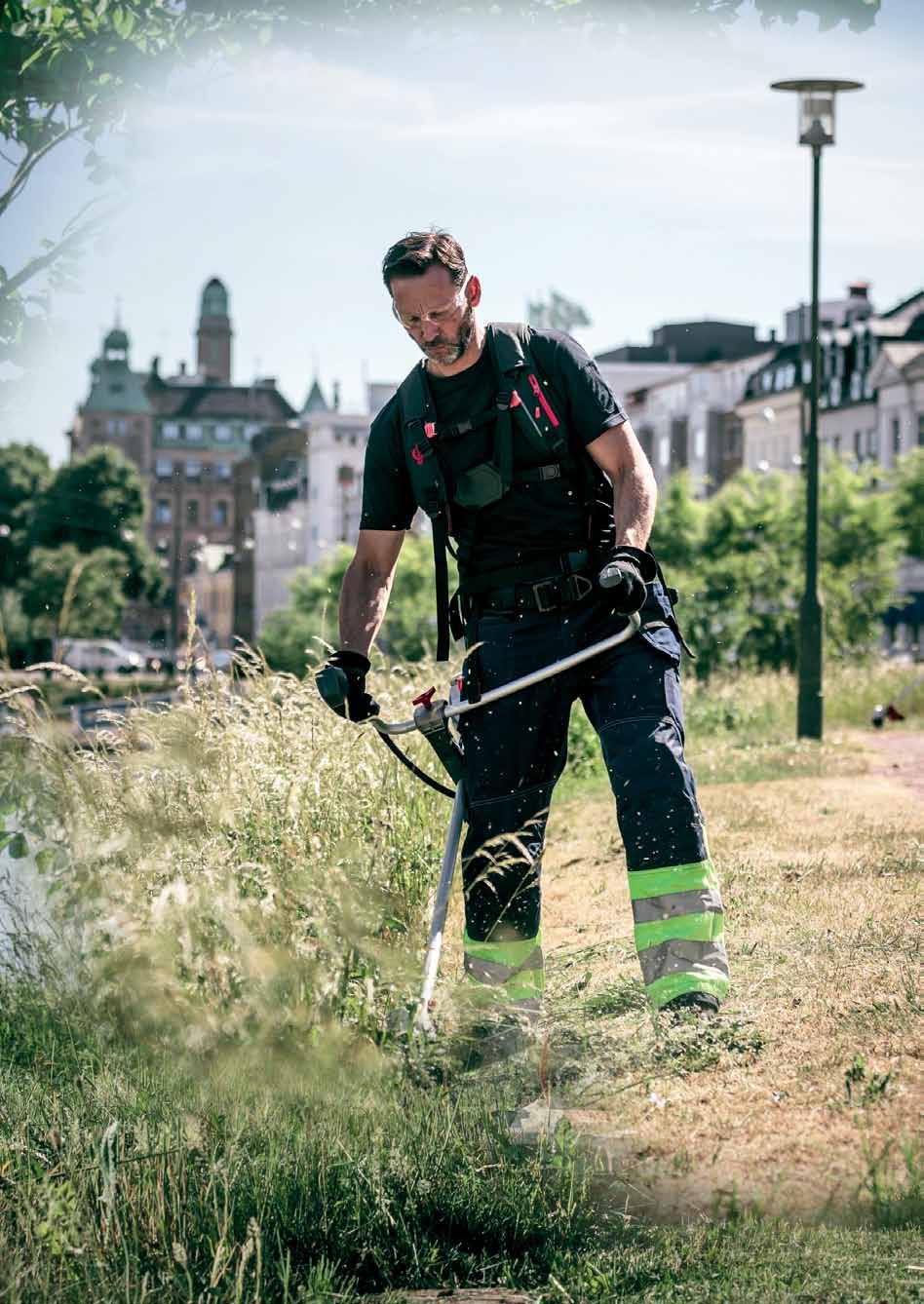
7 minute read
Women in Landscape
from March 2020
Annie Baillie is an Associate Director of Landscape Architecture at Place Dynamix in Dubai. She tells Landscape ME why it’s so important for young women who are breaking into the Landscape industry to have a mentor when starting out in their careers.
At what age did you realise you wanted to become a Landscape professional? I didn’t know about Landscape Architecture until I attended a careers convention at the age of 16. Once I read more about it and realized it combined my love of drawing and the outdoors there was no looking back!
Advertisement
Where did you study to become a Landscape architect and why did you end up moving to the Middle East? I first studied at Leeds Metropolitan University in the UK and then moved to Birmingham where I completed my degree and post graduate diploma. During my time at Birmingham, I started to work part-time for a local Landscape Architecture practice, Munro+Whitten, in my home town of Leicester, in central England. I was offered a full-time position after completing my studies and Don Munro, Practice Principal, mentored me throughout my time at that practice. Almost 12 years later my husband’s work brought us to Dubai in 2012. I was here in Dubai for 8 months before finally finding employment as a Landscape Architect with Place Dynamix and where I have been ever since.
Did you specialise in any particular area? What is Place Dynamix best known for? My personal specialism is planting design, but that said, I have experience in a wide range of projects and I consider myself to have a broad knowledge of development sectors and the different aspects of the Landscape Architecture discipline associated with those sectors.
As a design practice Place Dynamix has been fortunate to establish a broad portfolio of landscape, masterplanning and urban design work here in the UAE, the wider GCC region and further afield. We endeavor to make places special. One of the key questions we ask ourselves when working on project is “Would I want to go there? Would I visit this place?”. We have worked on all types of projects – residential communities, commercial hubs, developed guidelines, been third party reviewers, and found ourselves working alongside some of the world’s premier architects and designers on several projects. While we may not be identified with a singular style, I feel we are respected as being collaborative designers towards a holistic solution.
We meet the inspirational women who are designing the future Women in Landscape
Tell us what a typical day at Place Dynamix involves from a personal perspective? I usually get up at 5.30am and I’m typically at the office by 8am or sometimes earlier. Each day presents its different tasks and challenges, be it project related such as proposal writing or admin like catching up on emails and calls. I try to finish by 5pm but that sometimes slides, again depending on the day’s events. As a company, we offer flexible working hours as many of us have interests outside work hours and we like to be able to provide for those commitments by working around each other and collaborating. We also respect the value of home life and try, where possible, to manage the workload to give everyone a good home/ work balance.

What advice would you give other women who are looking to enter the profession or are just starting out in the industry in the Middle East? I find this discipline is greatly underestimated, in terms of the extent of what we do as specialist consultants and the effort and level we contribute and coordinate to help finalize projects. In this respect, I would urge anyone considering entering the profession to undertake a good internship to get a thorough insight into what the job really entails. For those just starting out; I would say find a good mentor that is willing to nurture you in your early career –there is no better way to learn the job than being alongside an experienced and seasoned professional that can guide you in all aspects of the discipline. I have certainly taken
inspiration from my mentor and I in turn, enjoy mentoring our interns. If I can demonstrate, being a successful career woman in the construction industry, this is an industry that women can consider and achieve a fulfilling career in then I’m happy to help in whatever way I can.
What qualities have helped you succeed in such a male-dominated industry? Listening and learning, determination, persistence and not being afraid to speak out.

How can companies encourage more women to work in the landscape field? We certainly tend to receive more female applicants from regional universities but generally we find there is an even mix of more experienced LA’s. Construction, in general, is a very male dominated sector, particularly in this region. I would say that the Landscape Architecture profession could do a lot more to promote and make the discipline more visible and appealing in terms of the challenges and opportunities the job presents, generally. For women, in particular, wanting to enter a design and engineering related field, Landscape Architecture is a small, close-knit industry and as such the scale of landscape teams in larger multidisciplinary companies or independent practices can be quite small, therefore finding the right fit for you is key to a successful career and a happy working life. to provide guidance on water conservancy and arid planting design. As landscape professionals, we feel we should be making efforts to introduce more desert adapted species to help combat the constraints of lower TSE volumes and, in doing so, increase the demand of lower water demand species so that commercial growers can provide us with a broader palatte of plant material to work with. Plant material is only one aspect of the wider sustainability challenge and we work closely with irrigation specialists to deliver a complete irrigation design that meets the plant’s actual water requirements through the use of efficient irrigation devises and the latest technology systems. We also work closely with storm water engineers to use the landscape as an opportunity to help alleviate the burden of storm water on the positive drainage network. In doing so we can help reduce capital costs to the developer by giving the landscape a secondary purpose as storm water attenuation.
What has been your most memorable project you’ve been involved in to date? City Walk was the first project I worked on here in Dubai. I don’t mind admitting I cut my teeth on that project. I learned so much more about my own discipline, as well as other project related disciplines, not to mention how fast projects move along in this region! As a keen cyclist, I was delighted to see so many people gathering to watch the end of the UAE Cycling Tour finish on the main boulevard. It was a very proud moment. Another project that was particularly memorable was when I worked alongside our Managing Director, Eric Wright, on the VIP Garden elevated high up the Dubai Creek Harbour Observation Tower. We spent a lot of time researching and problem solving the complexities of planting in an unusual and elevated environment and a lot of that new-found knowledge has been really helpful on other projects.
The workplace as we know it is changing. How are you and your company adapting so you are able to solve some of the biggest challenges that come your way? The local climate and water shortage is always high up on our design agenda when facing new projects and one of our biggest struggles is convincing developers to steer toward a more sustainable landscape. The requests for a ‘green and lush’ landscape design is still very common, but as stewards of the environment, we endeavor to deliver a sustainable landscape design that responds positively to the client’s vision. In doing so we look to other countries with similar dry environments, such as USA and Australia, Do you have any ambitions to start your own practice in the future? If yes, what would that look like? I worked as a lone practitioner back in the UK, following redundancy during the 2009 economic crash. I missed the day to day interaction with work colleagues and as such it isn’t something I would rush back to. Place Dynamix is a small practice, very much like M+W where I first started out in Landscape Architecture, and having worked for bigger companies as well, in the past, I feel this size of practice is the right fit for me. Although I am an employee, I feel a sense of ownership with Place Dynamix as we have grown and established so much together. The PD team are a great bunch and I think of colleagues as my second family, as we also spend time outside of work socializing. We have fun and I think that reflects in the way we work together.















